
Welcome, from sunny Australia!
My Honda VTR1000 Firestorm

My Honda VTR1000 Firestorm
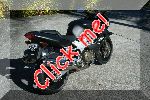 |
It's a
half-reasonable looking bike I think. They come in a few different
colours, but the black ones were literally $2,000 cheaper than the
other colours, as the dealer reckoned he was having trouble shifting
them. As I'd just bought a new black helmet, I have no problems riding
a black bike so after the test ride I told them if they had a set of
two-piece leathers that fitted me, I'd buy the bike on the spot. And that's what happened. |
 |
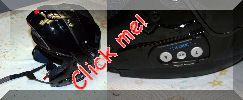 |
Another handy
gadget I got recently was a Nolan bluetooth-equipped helmet. It
connects up to the mobile phone, so I can make calls when I'm riding.
The sound cancelling works very well indeed, and the people that've
called me don't know I'm on a bike. My other reason for buying such a thing is that for the MME car race I do in Malaysia every year, it'll be an excellent way to talk to the pits when I need to. The phone can normally be just tucked away in your pocket for recieving calls, but to make a call I still need to use the handset, and after a bit of thought I came up with the idea of strapping it to my right arm. That way, I can keep riding/driving and hit the last-redial button to call home or the pits, as the case may be. No wires, so no fuss. |
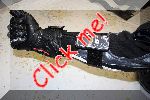 |
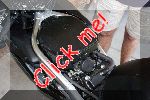 |
In early March 2007
I decided to do the inlet restrictor mod that the good people on
OzFirestorm talked about, as the VTR's (as apparently many other bikes
do as well) have a disc of metal in the inlet, between the throttle and
head, to restrict the airflow into the engine. I'm not sure why it's
there, but it reduces the top-end power of the engines quite a lot. So
mine had to come out! On the left is the VTR with the fuel tank removed and you can see the huge airbx that lives there. On the right the airbox is removed and the carbies exposed. I've got large hands so it was pretty difficult for me to get into all the little spaces to undo the number of tiny pipes and so on, but with patience it all got done. |
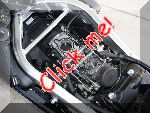 |
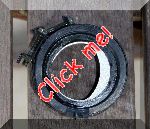 |
On the left is one
of the inlet restrictors, and as you can see they block off something
like 15% or so of the airflow into the engine - and make
what goes in rather turbulent as well! Fortunately once they were out
of the engine and on the table the restrictors were very easy to
remove. On the right you can see that now the airflow has a nice, clear path into the engine. I have to pull back the vacuum-actuated flat-slide with my fingers when the engine isn't running to see into the inlet. The carbies are 50mm Kheins I think. The acid test was riding the bike, and before the mod the engine would start to really die up around 7,000rpm. After the mod I didn't notice much difference up to about 5,500rpm, but after that the engine really jumps noticeably in power and pulls very strongly past 8,000rpm+. It also gets slightly better fuel economy. |
 |
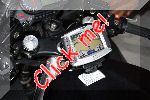 |
One thing that's really quite difficult to do is read a road map on a bike! So at around the same time as the inlet mod I also bought a Garmin Zumo GPS navigator. I picked that one as they're specifically designed to work on a motorbike, being waterproof and have a special interface for use with thick fingers and bike gloves. It mounts on the two bolts that hold the front of the fuel tank down and it's an incredibly handy device. |
|
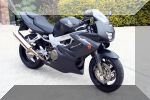 |
In September
2008 I purchased a Sharkskinz lower fairing for the bike, to
improve the appearance and cooling. To stop the extractors from making
the pain bubble from the heat, I wrapped about 45cm of the pipes with
heat-cloth. The fairing also has a silvery heat-shield to help
overheating. I also fabricated the small 6mm thick shim that goes between the top of the rear damper and the chassis, to lift the rear of the bike a little so it reduces the rake on the forks, which in turn makes the bike turn into corners a bit better. The downside is that it now wanders around a little more on the highway than it used to, but it's quite liveable. |
Back to the Index page
Page & contents where applicable © Bill Sherwood